A snowplow clearing a parking lot during a blizzard
Photographing winter snow can be challenging with digital and analog cameras. Obviously more so with analog since you don’t have immediate feedback to help with adjustments. That added complexity can make the process more enjoyable if you like working in the unknown. To be a well-rounded photographer we should find ways to shoot in any condition Mother Nature throws at us.
Winter offers a few obvious obstacles such as cold temperatures, precipitation, and tough metering situations. Working with analog cameras can intensify these challenges— especially for those new to the medium. Beating these challenges can be an extremely energizing experience.
The first series of photos below were taken during a blizzard in Massachusetts that dumped some two feet of snow in less than twenty-four hours with 65 miles per hour winds. Photographing under these conditions requires keeping your equipment and your body warm and dry, compensating for low light, and metering for the skewed readings of a white frame.
To keep my camera warm and dry, I wrapped it in a plastic bag and kept it in a warm camera bag when not in use. I used what could be considered an advanced point-and-shoot camera the Nikon N70. Setting the camera to full auto made prevented me from having to fiddle with adjustments through a plastic bag. My film choice was Ilford HP5 pushed to iso 800. I set metering to Matrix mode and overexposed by two stops to compensate for the reflective snow.
The remaining challenge was walking in high winds and ever-increasing snow. There wasn’t much I could do about this other than keep the walking time to a minimum.

A home with several signs and banners during a blizzard
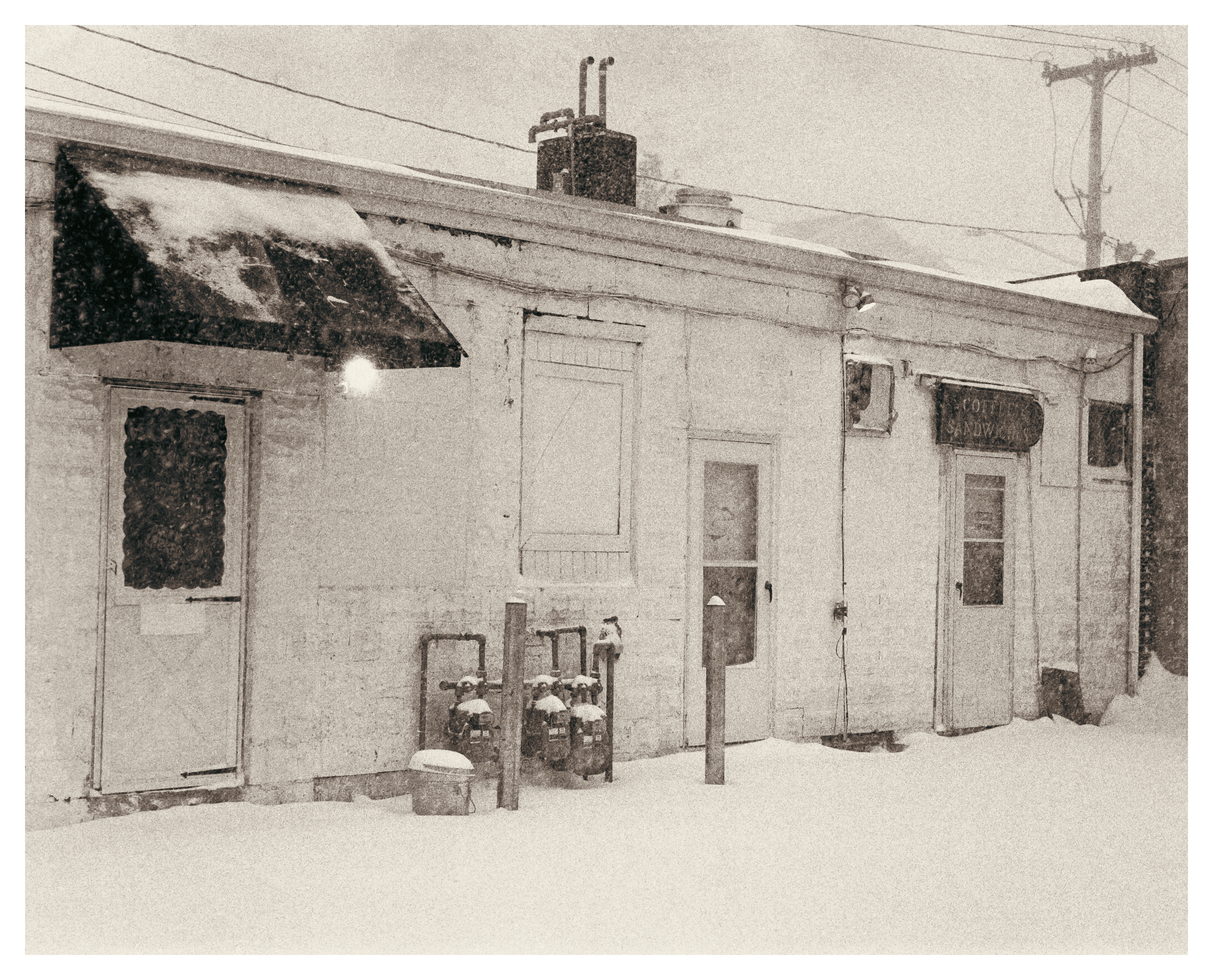
Backside of a shopping plaza during a blizzard
Waiting until the storm is over and the sun comes out is obviously a much more pleasant experience. The images below were taken the morning after a less intense storm (about 1 foot of snow). Getting out early is important if you want to capture clean minimally touched snow. Not long after I shot several of these images, the plows started to move in and ruin the winter wonderland effect.
The same metering principles are applicable as during the storm. When the majority of the viewfinder is white— either meter off a neutral area or overexpose by 2 stops. The bright sunny morning allowed me to use a lower ISO film. Ilford FP4 Plus has a nice contrast level, wide latitude, and a smooth grain which works well for high contrast landscapes. If I wanted a near-zero grain look I would have chosen Ilford XP2 Super EI 200 or 100 which has an amazing latitude and sharpness. All of the below images were shot on a Nikon F5.
A beautiful park and war memorial covered in snow after a storm.
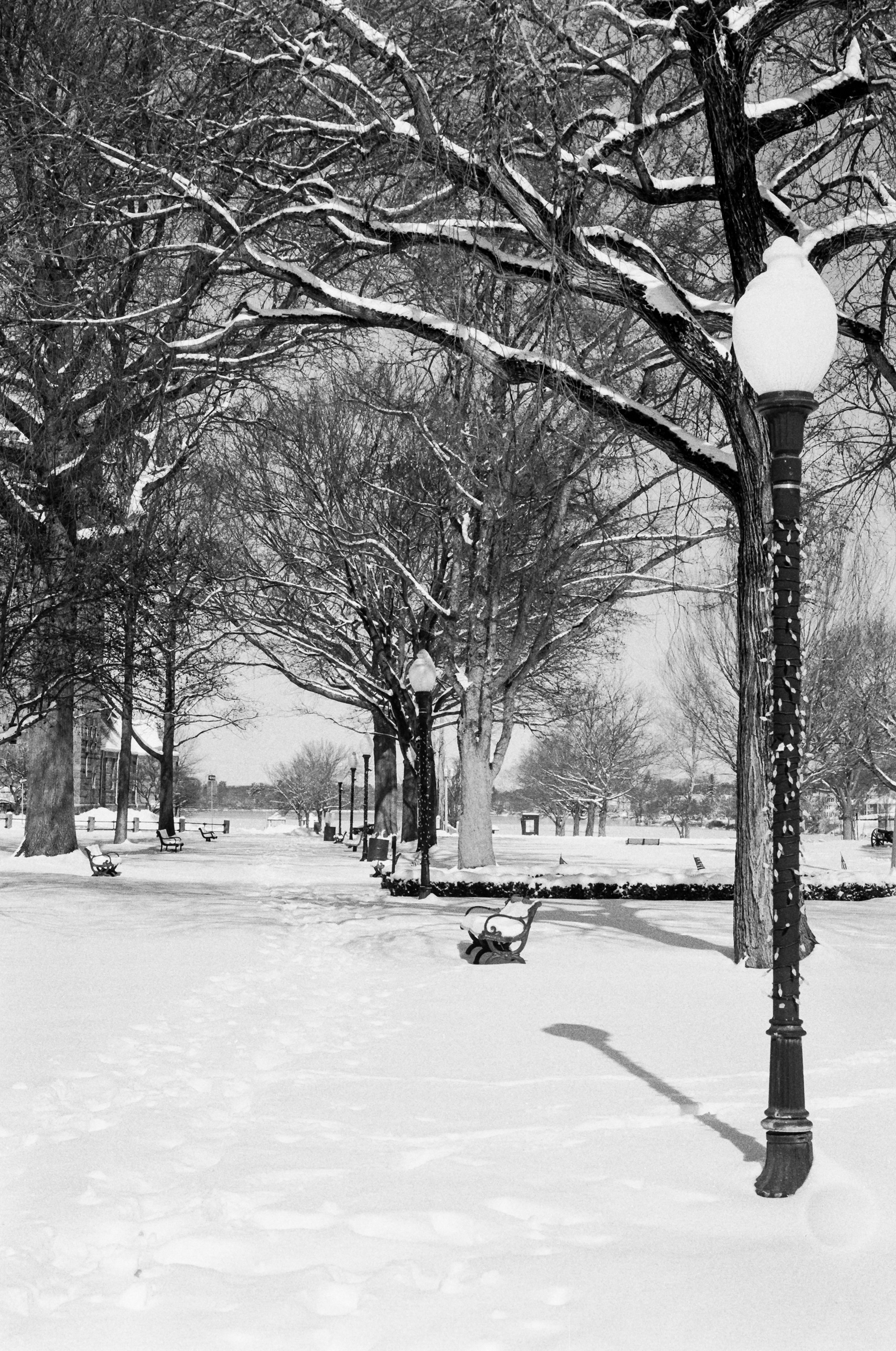
A row of vintage streetlights and benches along a walkway in a snow covered park.

A vintage canon sits covered in snow on a winter day in a public park
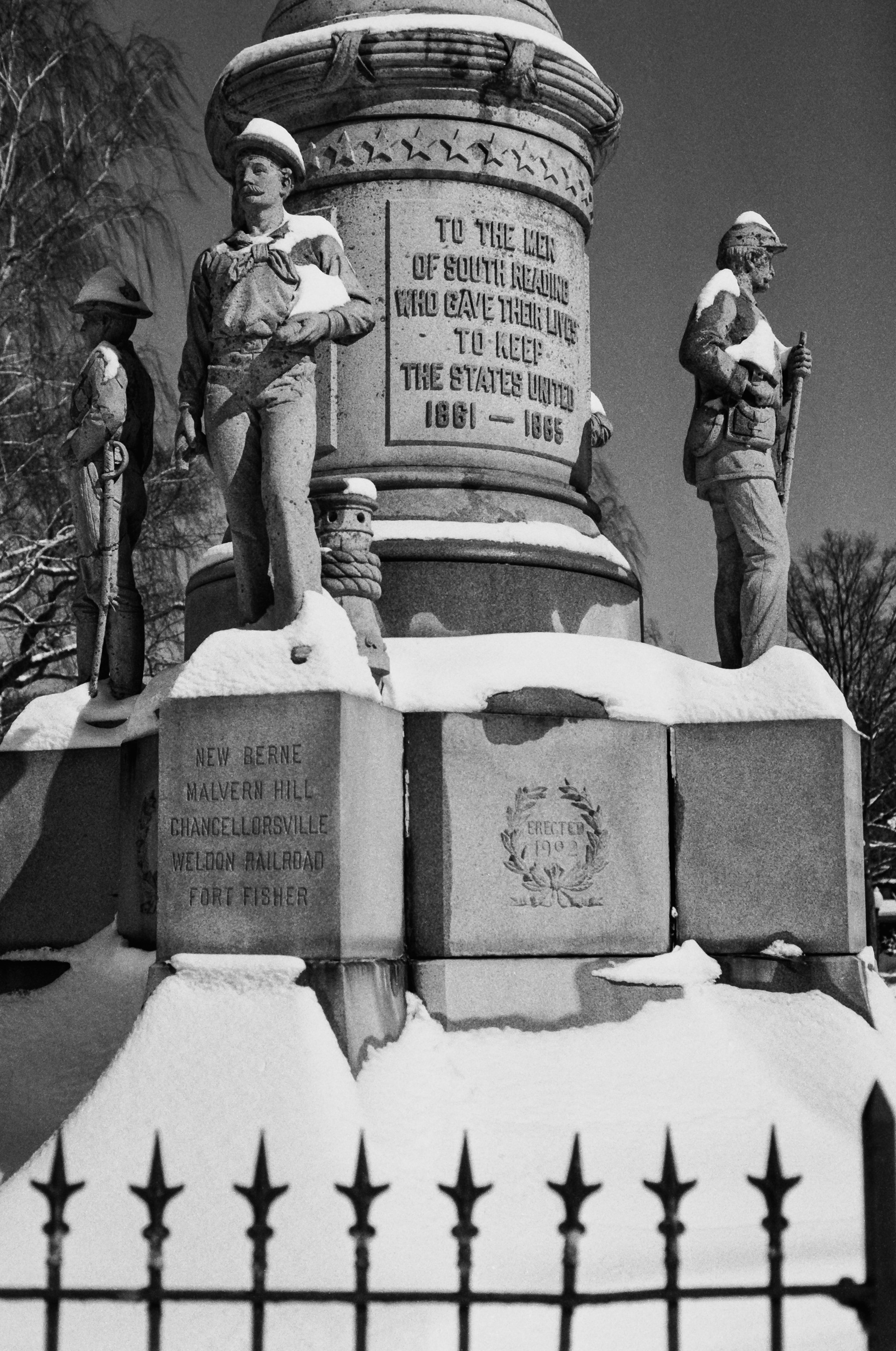
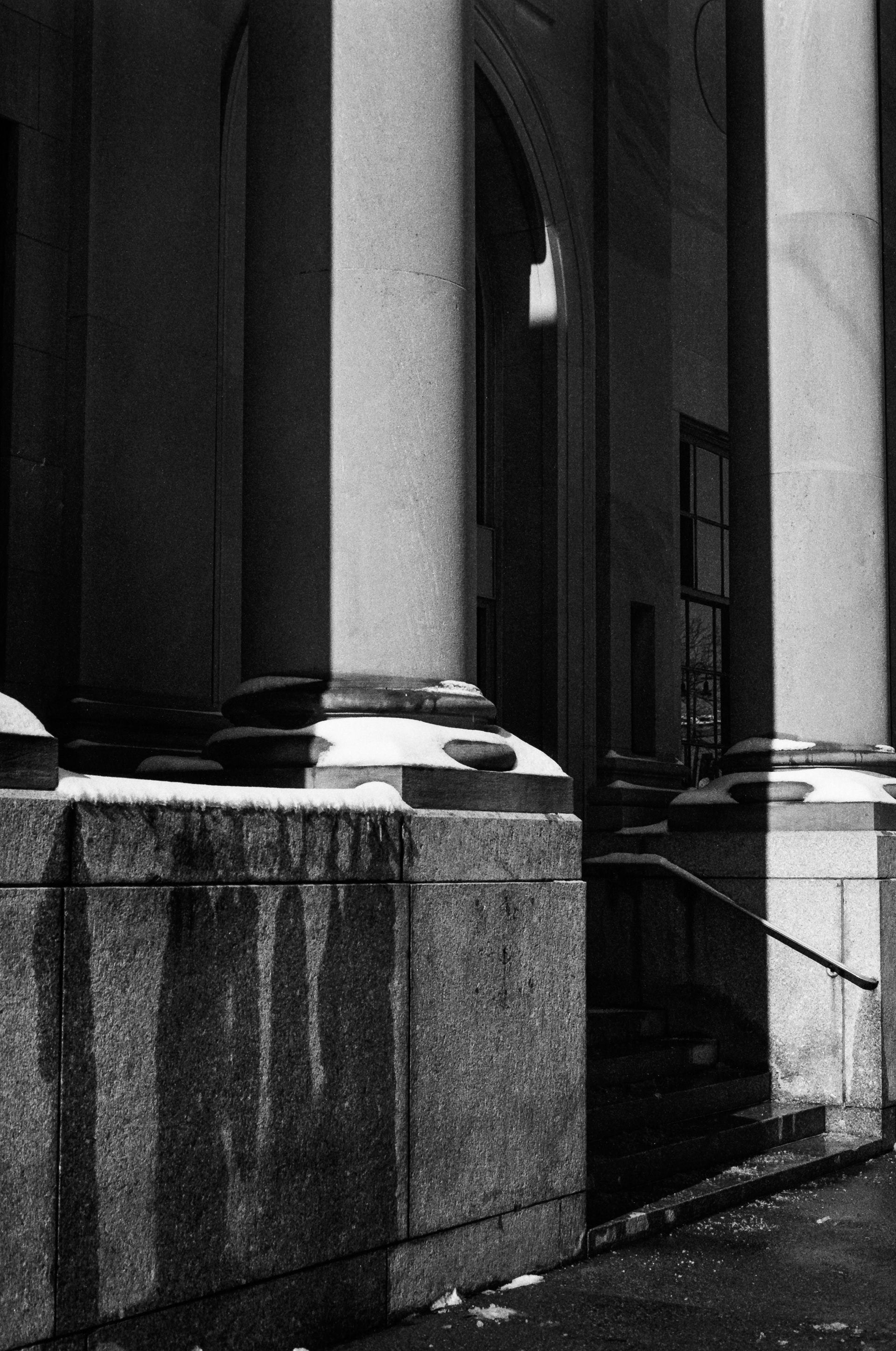
Stone columns in front of official building after snow storm.

A street light in front of a modern wall after a snowstorm.
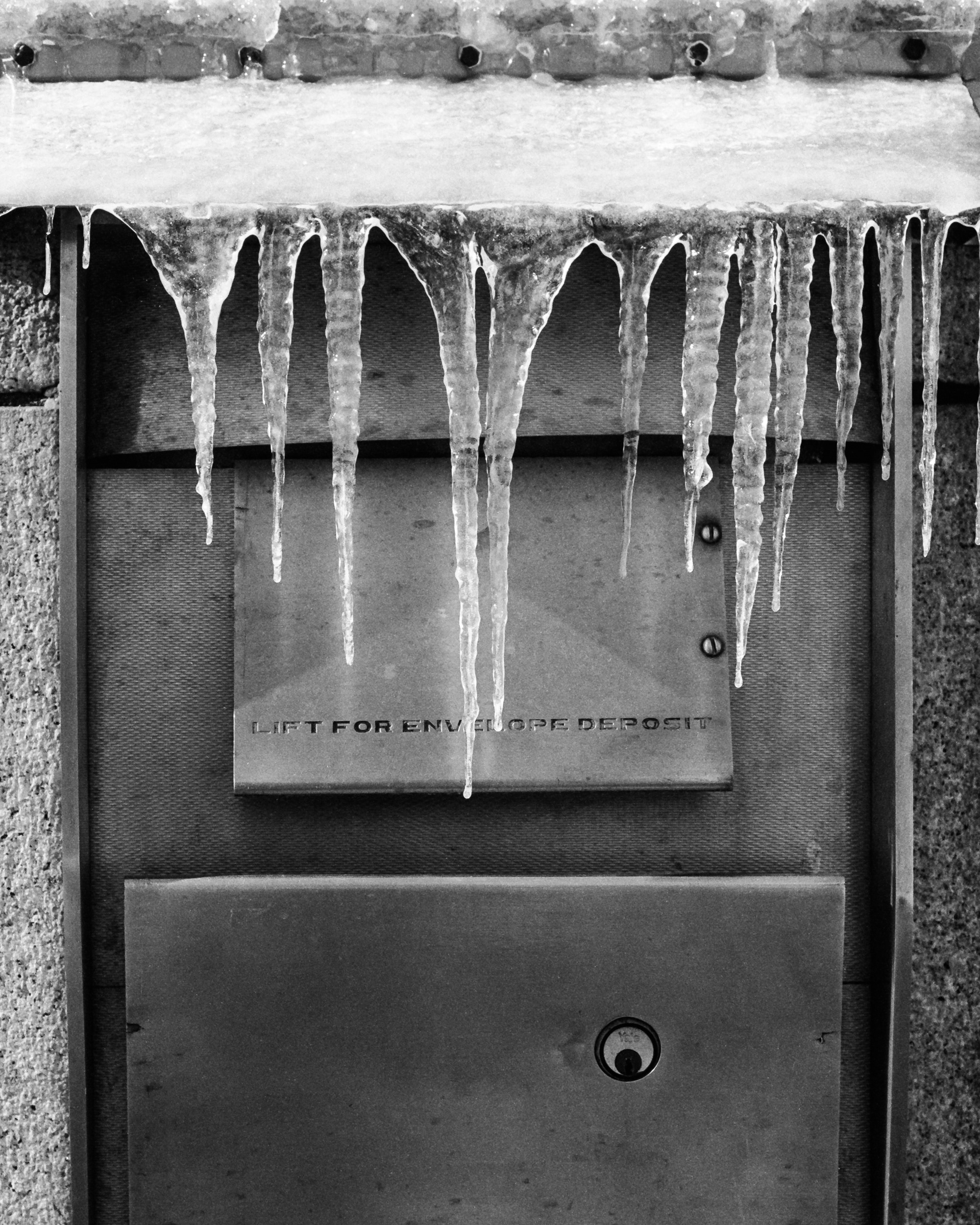
A bank drop box covered in snow and ice.
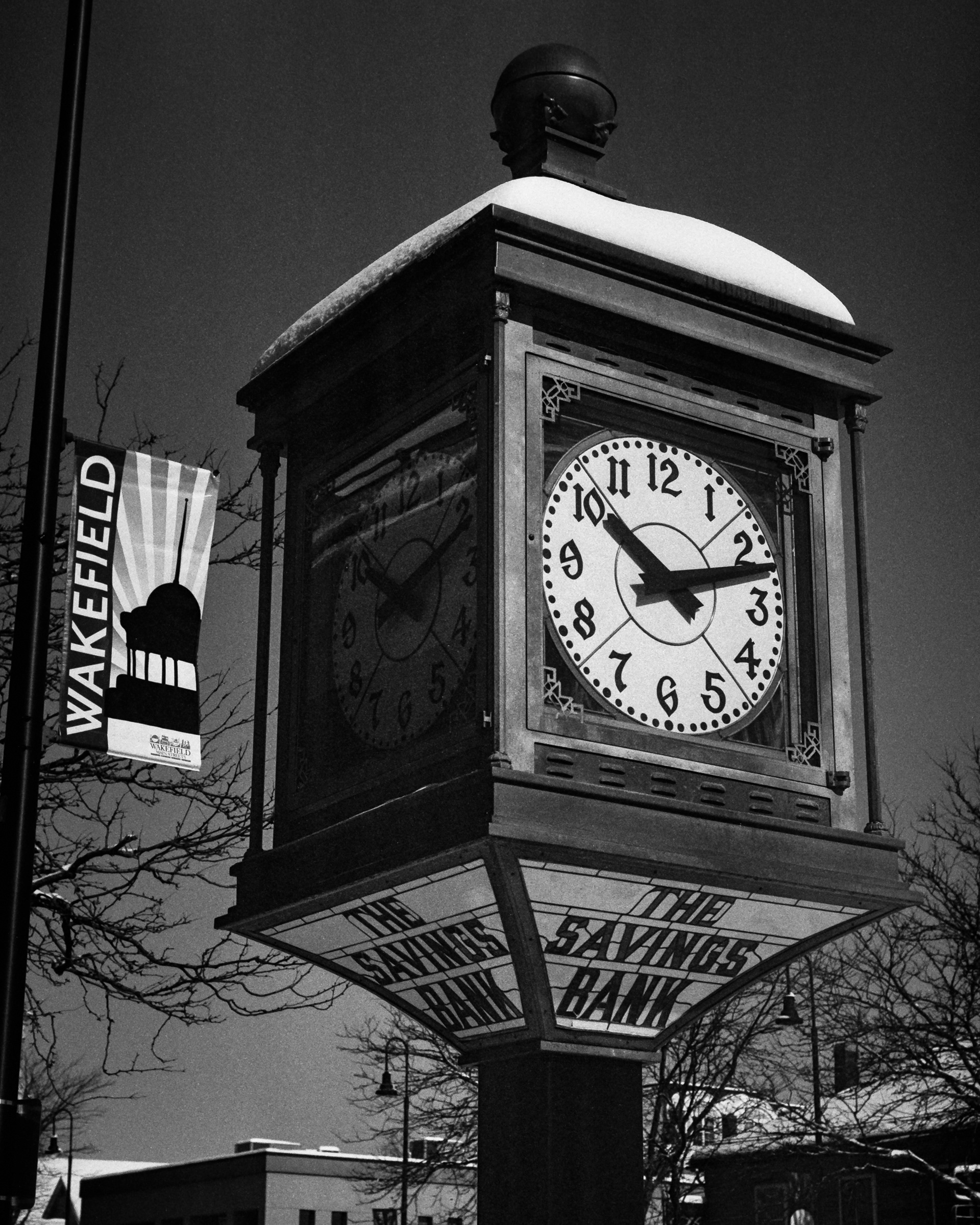
A vintage clock tower stands in the center of town after a snow storm.

Snow covered water fountain and park bench sit against stone wall after storm.

Outdoor restaurant seating area covered in snow after a storm.
Every season offers Enrique challenges. Have fun and go out and experiment. The worst thing that can happen is you get some fresh air and exercise.